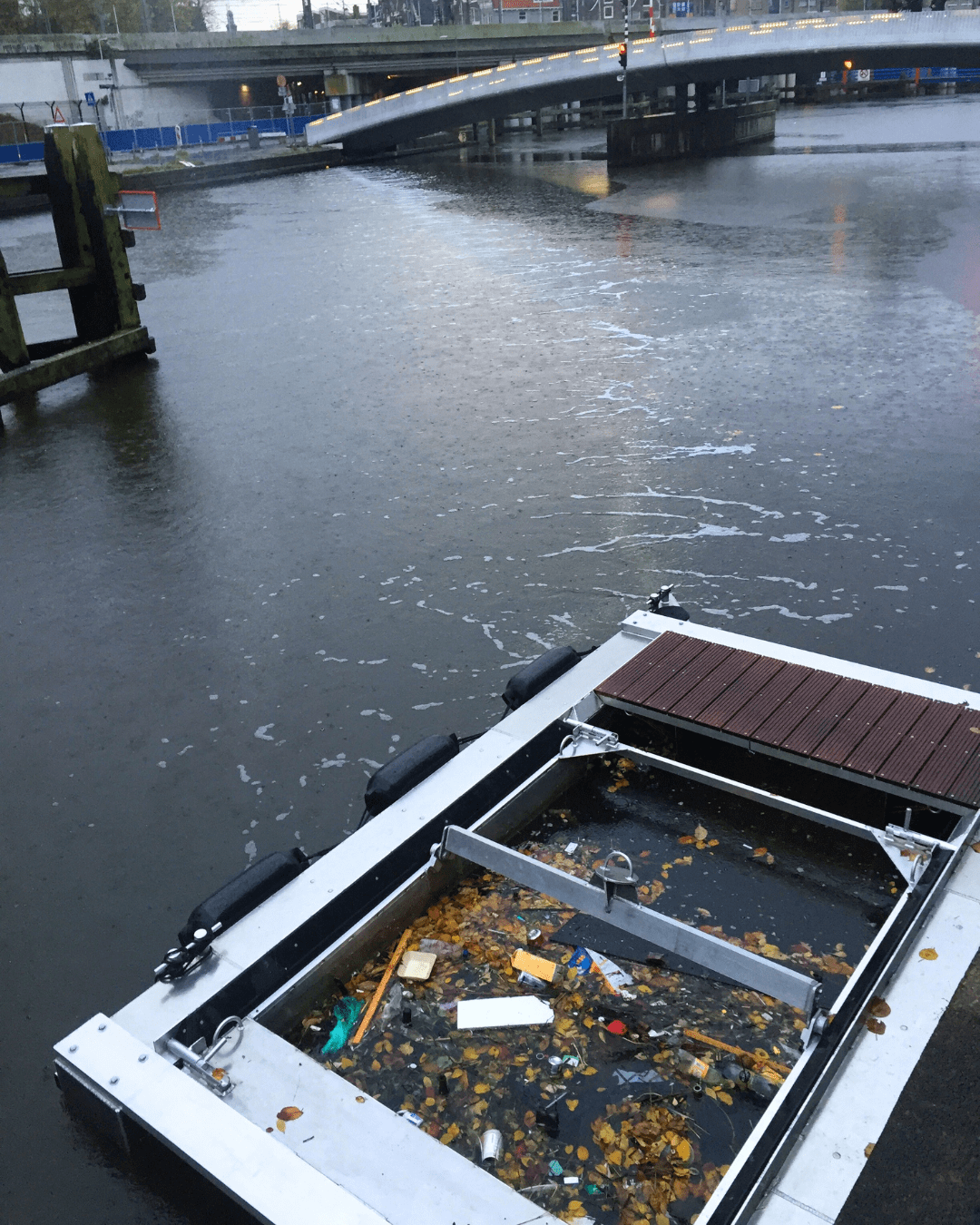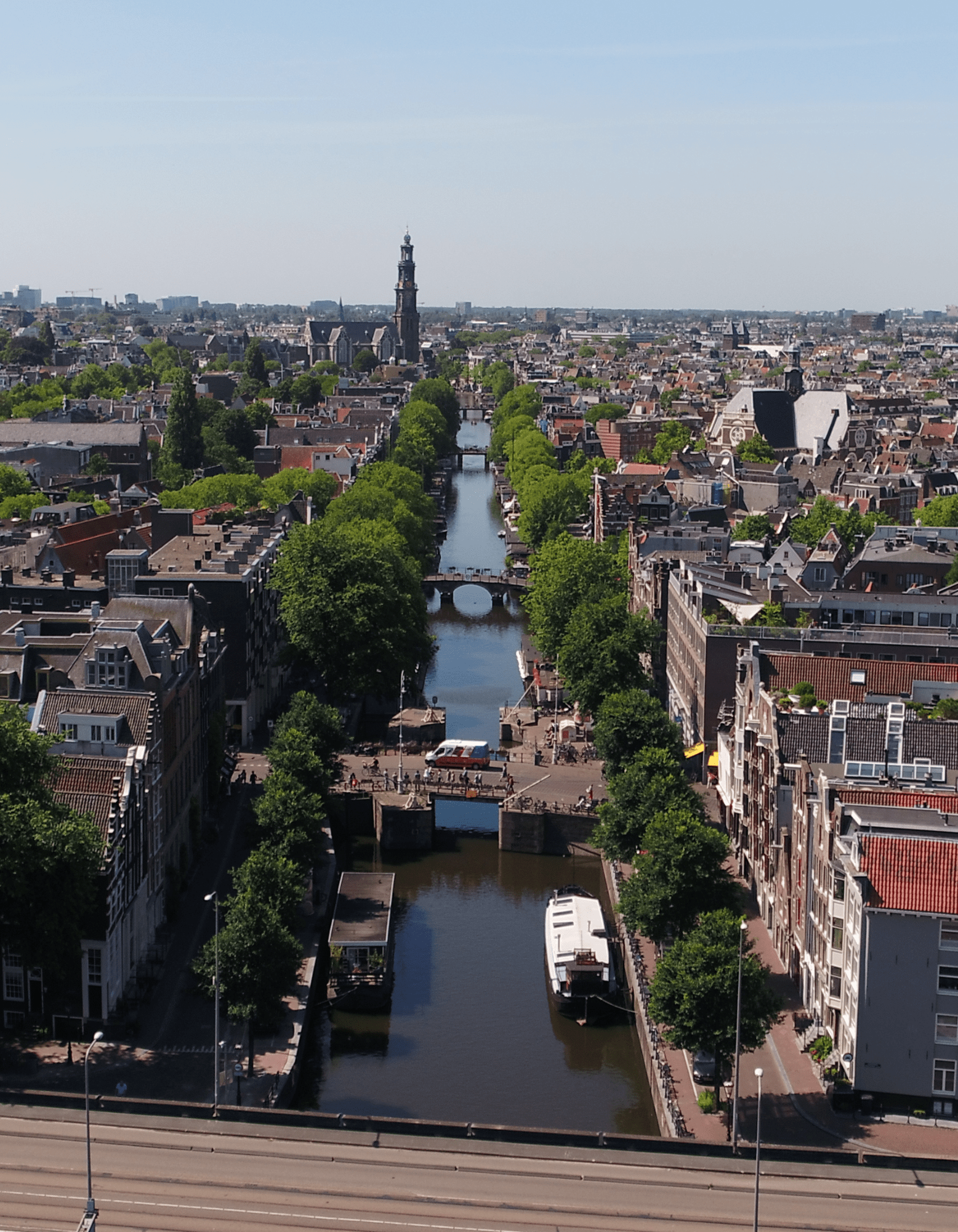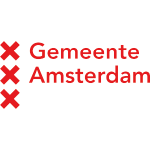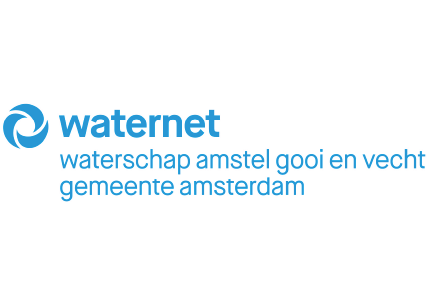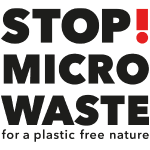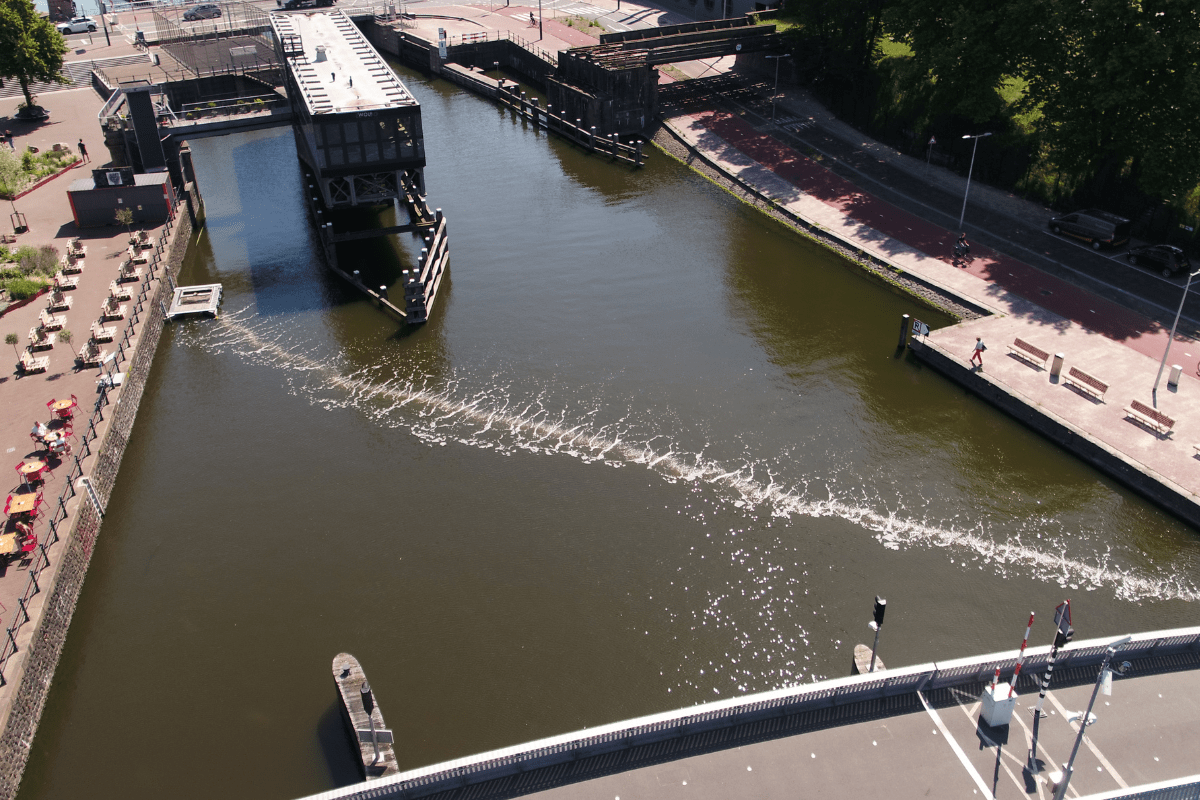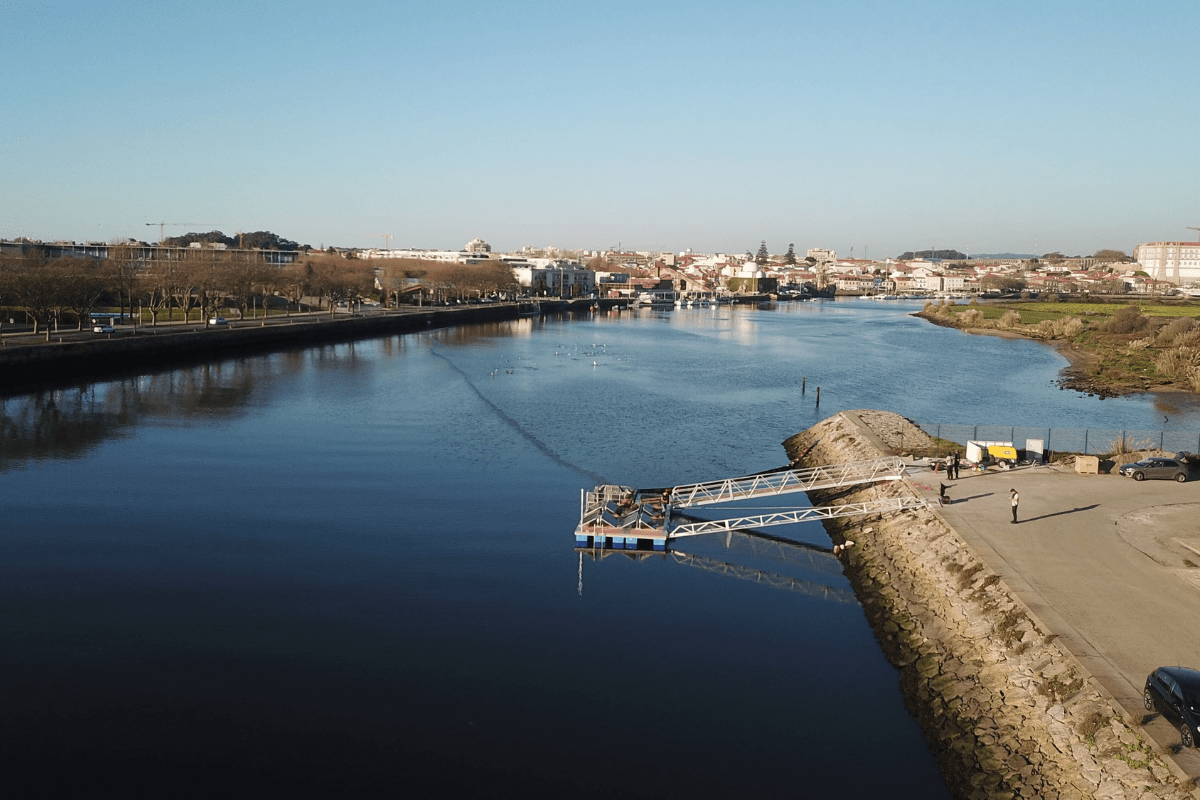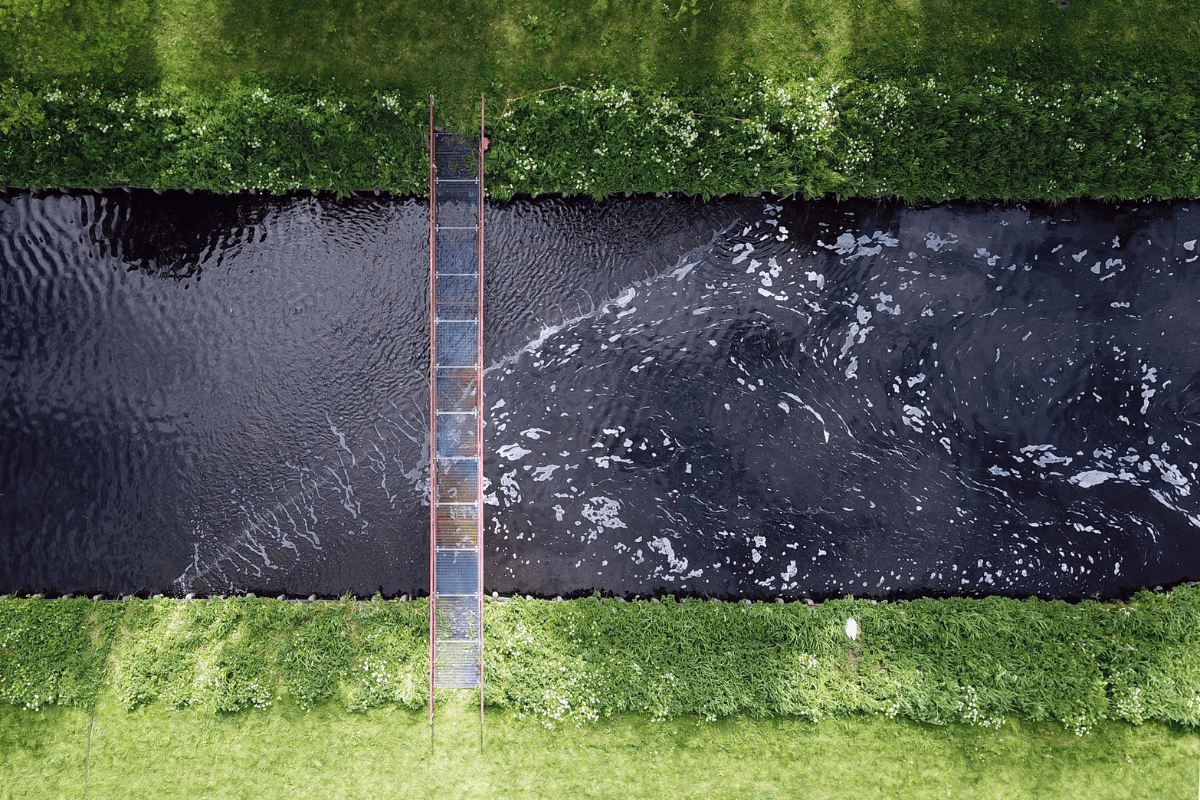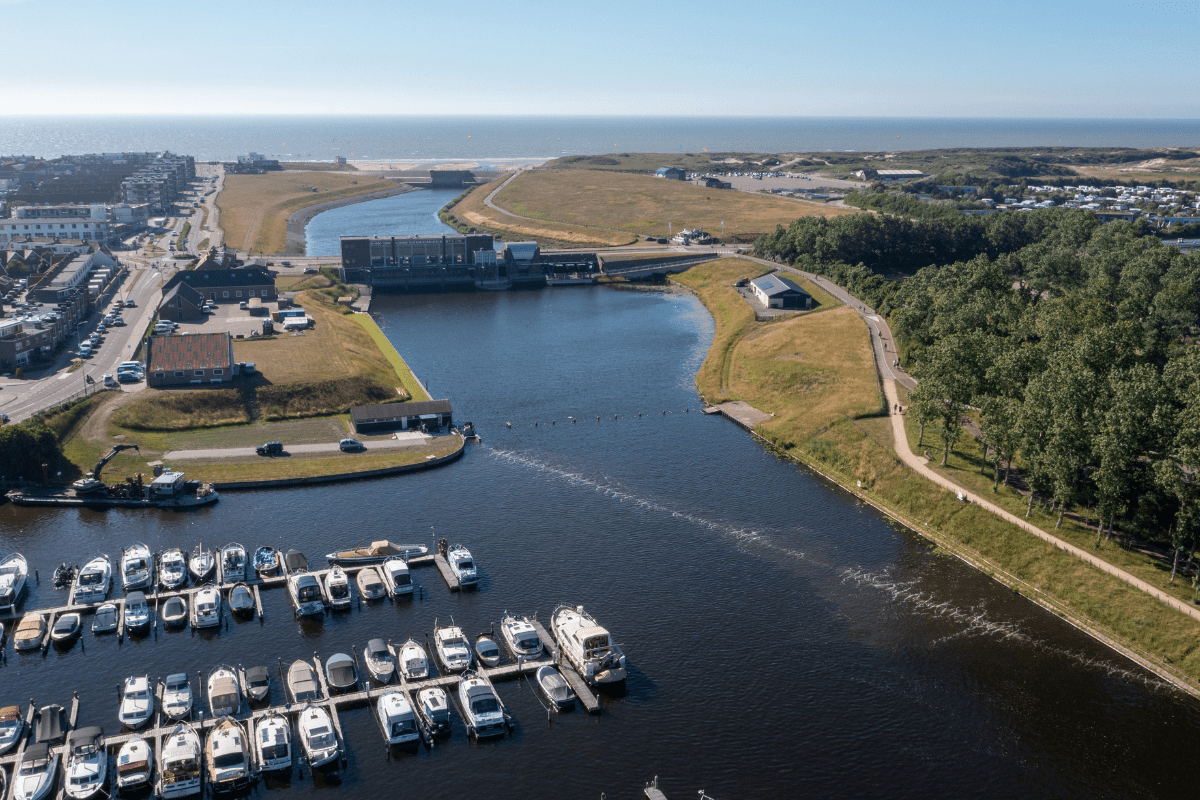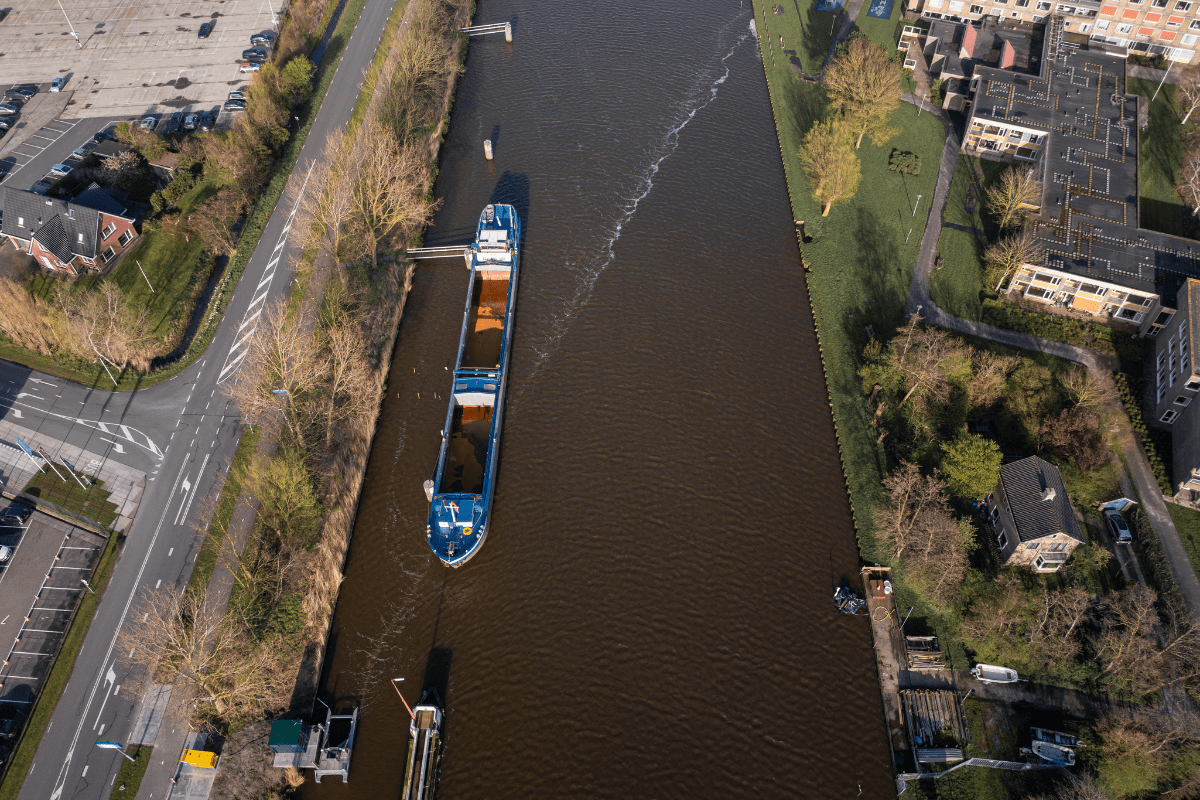BUBBLE BARRIERS
Bubble Barrier Amsterdam
In the autumn of 2019, The Great Bubble Barrier installed the first long-term Bubble Barrier in the world in Amsterdam, the Netherlands. The Bubble Barrier is located at one of the outlets from the historic canals into the IJ. Its purpose is to clean the water and prevent plastic waste from Amsterdam canals from eventually flowing into the North Sea. This project marks a global first in the fight against plastic pollution.
Bubble Barrier Amsterdam was commissioned by Waterschap Amstel, Gooi and Vecht and the Municipality of Amsterdam.
The Location
Cleaning Amsterdam’s canals
Plastic pollution poses critical challenges to water ecosystems across the world. Urban water systems especially are estimated to be the main contributors to river plastic pollution.
Amsterdam is the capital city that has more water than Venice and more bridges than Paris. The city is famous for its canal belt, which is a UNESCO World Heritage Site. Due to it’s popular location, the canals attract a lot of ship traffic and recreation, but unfortunately, also a lot of river plastic pollution.
The Westerdok is one of the entry points from the monumental canals of Amsterdam into the IJ. The IJ flows into the North Sea Canal which directly leads to the North Sea. By placing Bubble Barrier Amsterdam in the Westerdok, plastic is prevented from reaching the North Sea.
The Project
Collaborating for clean water
Bubble Barrier Amsterdam was commissioned by Waterschap Amstel, Gooi and Vecht and the Municipality of Amsterdam as part of the “Amsterdam Clean Water” programme, with the goal to achieve plastic-free waters in Amsterdam by 2030.
Waternet cleans the cities’ waterways by boat every day on behalf of the water board and municipality. By adding the Bubble Barrier technology to the cities’ waste management structure, plastic waste that is beneath the surface and smaller in size, can be captured and removed easily.
Bubble Barrier Amsterdam captures plastic 24/7 and covers the full width and depth of the canal. It’s powered by renewable energy from the city’s electrical grid.
our impact
Effectively removing plastic from waterways
kg
of dry (plastic) waste caught in Amsterdam until March 2024*
pieces
of dry (plastic) waste collected in Amsterdam until March 2024*
*excl. organic matter. Based on Bubble Barrier Amsterdam’s 1-year research
kg
of dry (plastic) waste caught in Amsterdam until March 2024*
pieces
of dry (plastic) waste collected in Amsterdam until March 2024*
*excl. organic matter. Based on Bubble Barrier Amsterdam’s 1-year research
THE RESEARCH
Monitoring plastic pollution levels
Besides capturing plastic pollution, Bubble Barrier Amsterdam is used as a monitoring tool to assess plastic pollution types, levels, and origins. This data is important to effectively prevent plastic waste from entering the canals in the future.
On behalf of Waterschap Amstel, Gooi and Vecht, a research alliance with the Plastic Soup Foundation and The Great Bubble Barrier was formed to monitor the plastic catch of Bubble Barrier Amsterdam.
Waste collected by the bubble screen in Westerdok has been dried, sorted, and analysed for over a year. By using the OSPAR monitoring method, which has over 100 unique categories, valuable insights can be gained.

The waterway
Westerdok
Amsterdam’s canal network was built at the end of the 16th and 17th centuries as a result of land reclamation to expand the city area. In order to improve the connection with the North Sea, the North Sea Canal was built in the 19th century.
The IJ and North Sea Canal provide the main passage from fresh water systems upstream to the salty North Sea. The passage serves as an extensive migration route to open sea for both shipping and aquatic life.
The Westerdok is one of 8 outlets of the cities’ historical canals towards the IJ. River plastic pollution coming from the city gets intercepted by the Bubble Barrier system placed in the Westerdok.

The BUBBLE BARRIER SYSTEM IN WeSTERDOK, AMSTERDAM
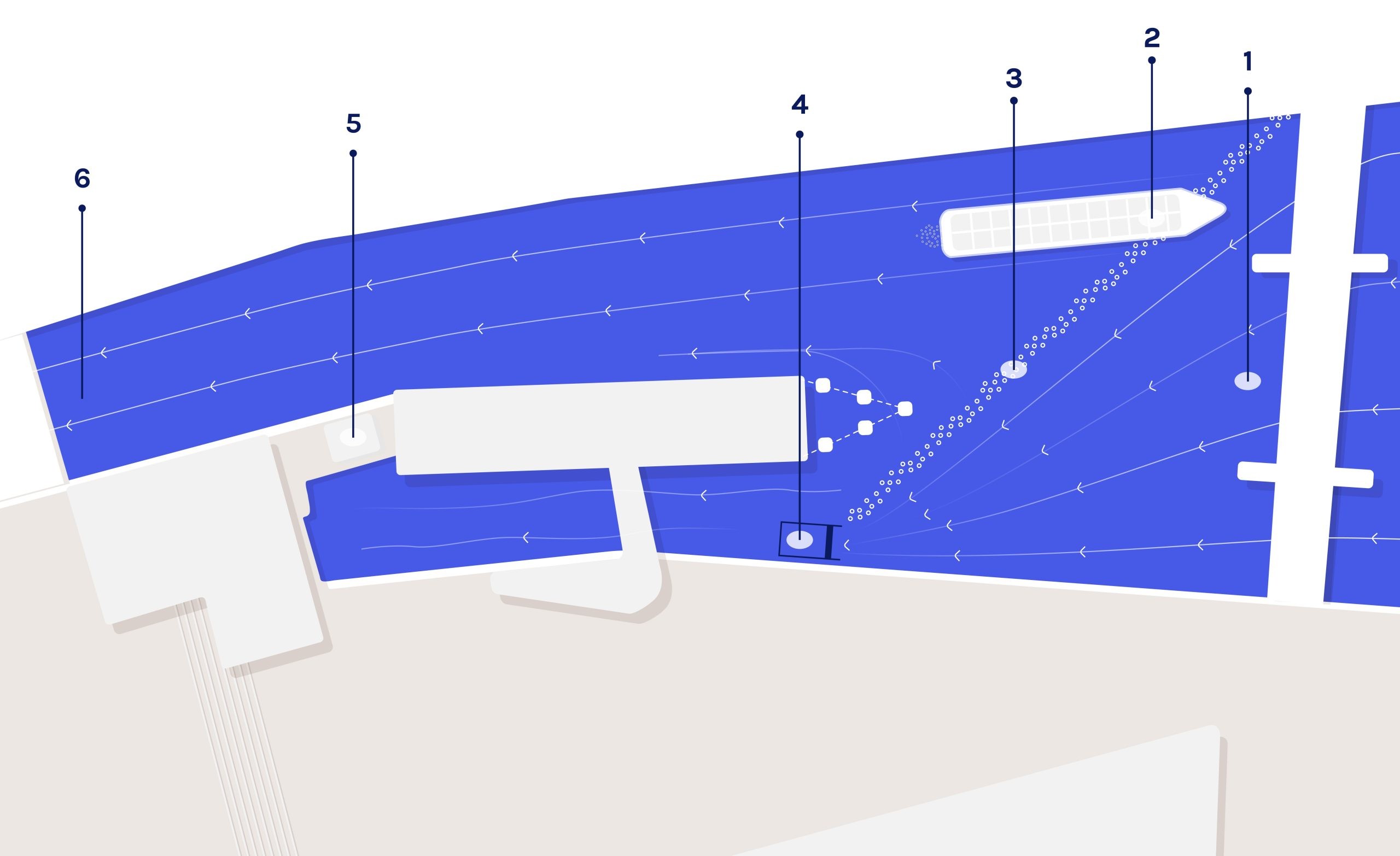
1. Plastic in water
Plastic in the water, which flows through the Amsterdam canals to the Bubble Barrier and is guided by the bubbles into the catchment system.
2. Boat traffic
Boats can pass through the Bubble Barrier without hinder.
3. Bubble Barrier
The Bubble Barrier is placed diagonally in the river, in a precisely calculated angle for the highest possible capture of plastics.
4. Catchment System
The floating Catchment System retains the plastic catch until removal
5. Compressor
An electric compressor supplies compressed air for the Bubble Barrier and is placed in a sound-insulated container.
6. Result
Water without plastic waste flows via the IJ into the North Sea.
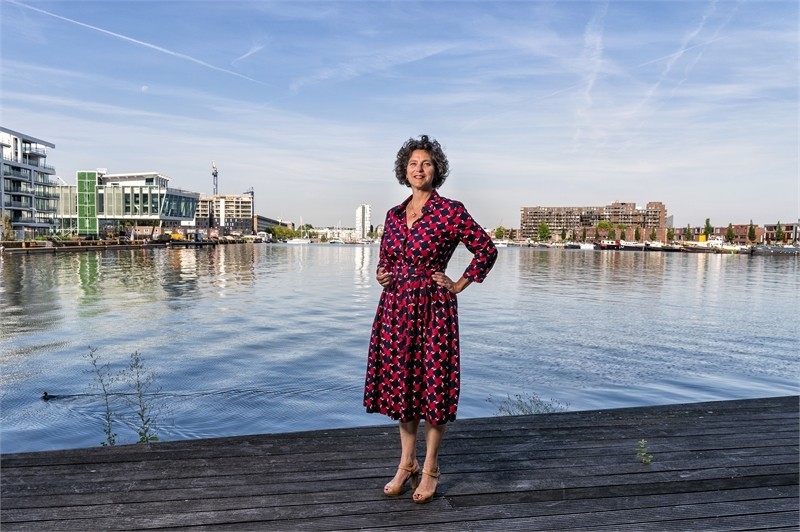
“Although we want to prevent plastic litter as much as possible through new measures and the installation of enough waste bins, a lot of plastic still ends up in the canals with or without intent. I am therefore delighted to enter into a partnership with Waternet to do something about canal plastic”
Marieke van Doorninck, Municipal Councilor
Municipality of Amsterdam
“We want to remove as much plastic as possible from the water to prevent pollution of the North Sea. Of course, we would prefer that no plastic is entering the environment at all – with the Bubble Barrier we are at least tackling pollution from the canals.”
Sander Mager, Daily Board Member
Amstel, Gooi and Vecht
Water Management Board
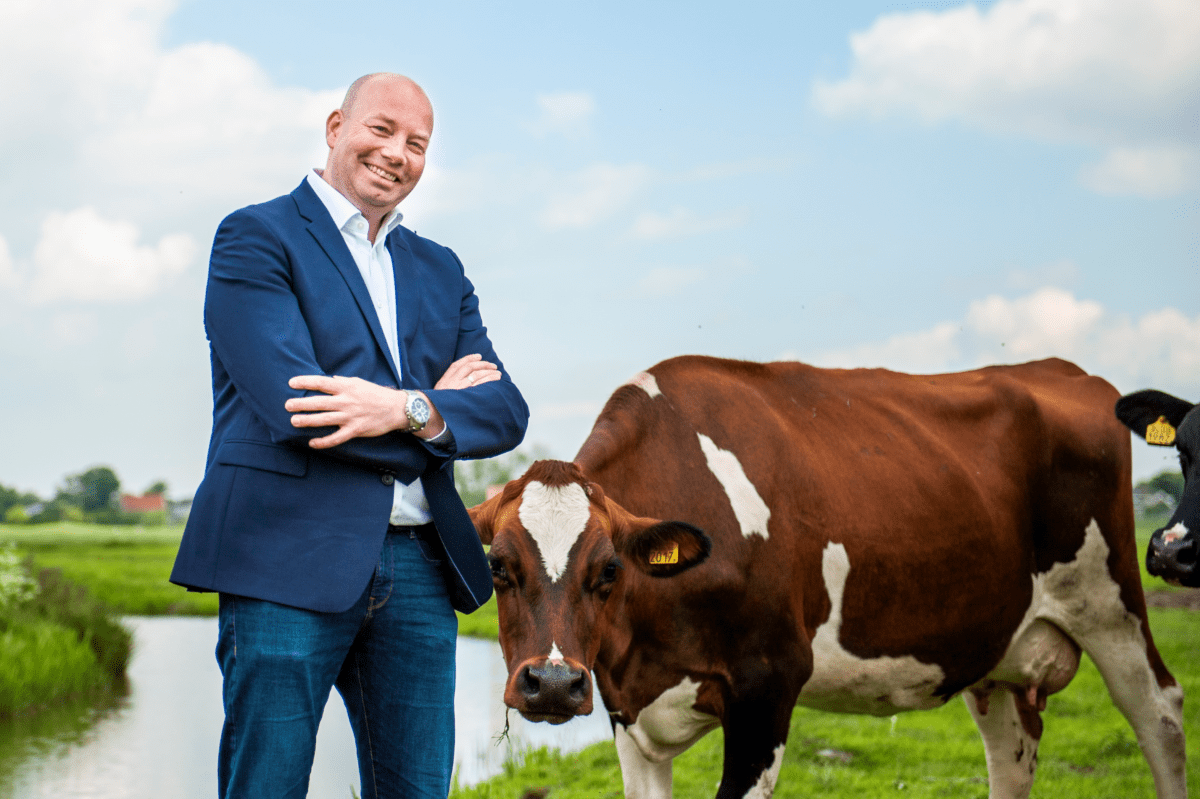
Bubble Barrier Amsterdam partners
The only key to solving riverine plastic pollution is collaboration.
Bubble Barrier Amsterdam is commissioned by Waterschap Amstel, Gooi and Vecht and the city of Amsterdam.
Press and Media
Download imagery from our Press Kit or get in contact with our press team.
To stay up to date about other bubbly projects you can also sign up to our press list.
VIEW MORE PROJECTS
Never enough bubbles
Get inspired by other Bubble Barrier locations!

